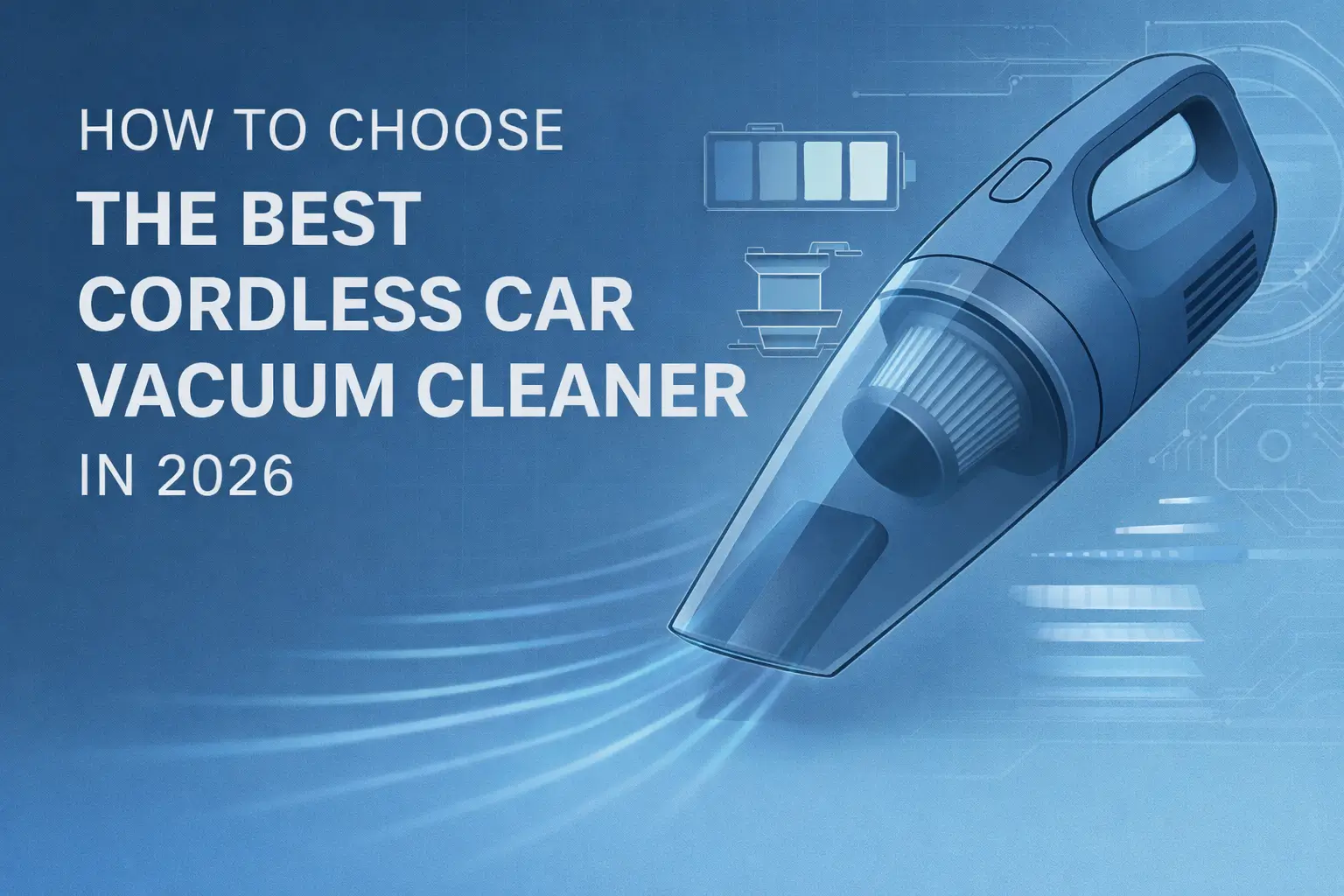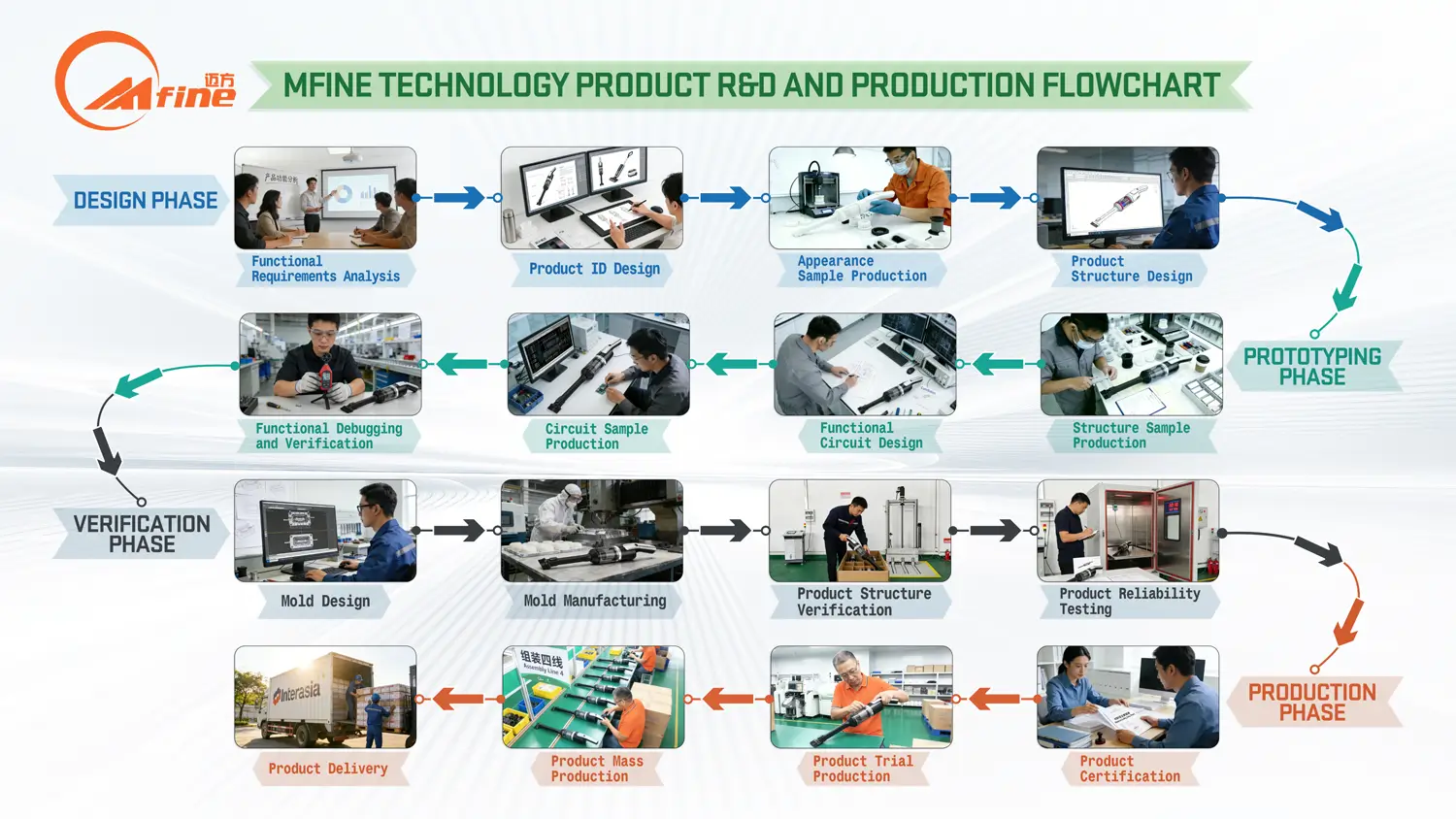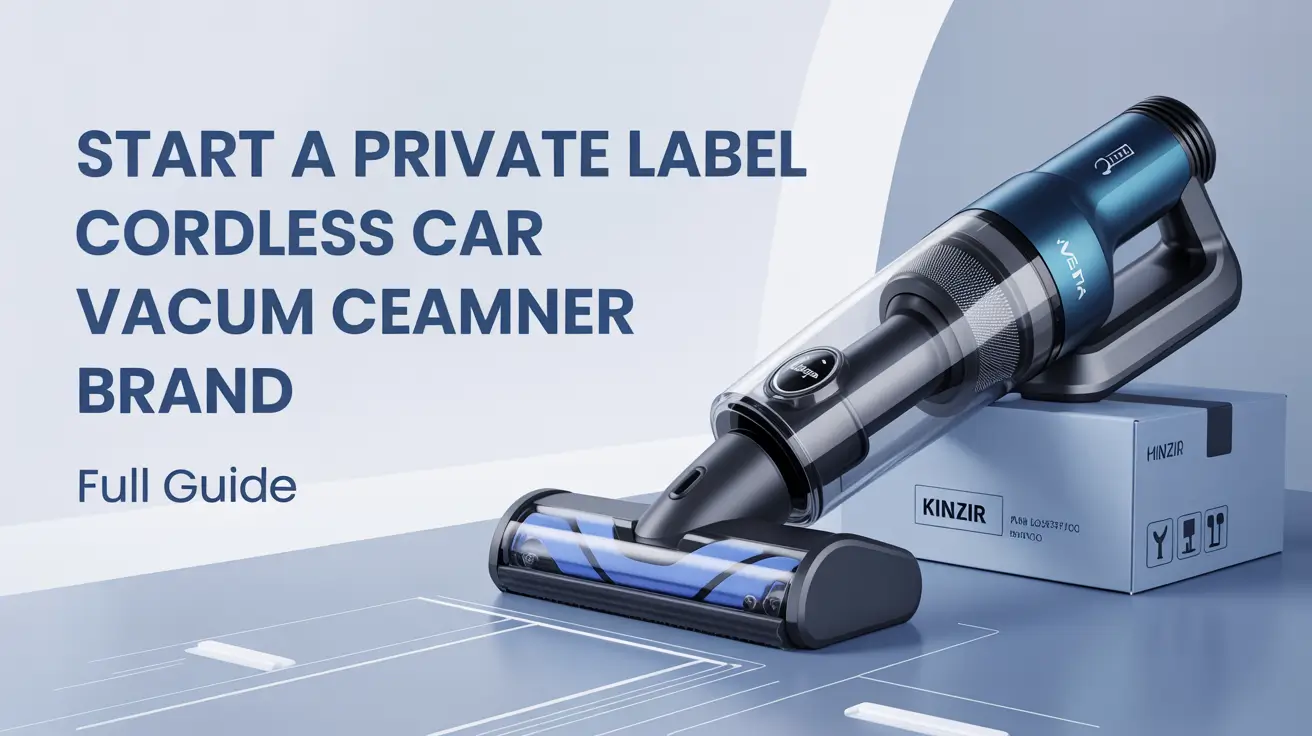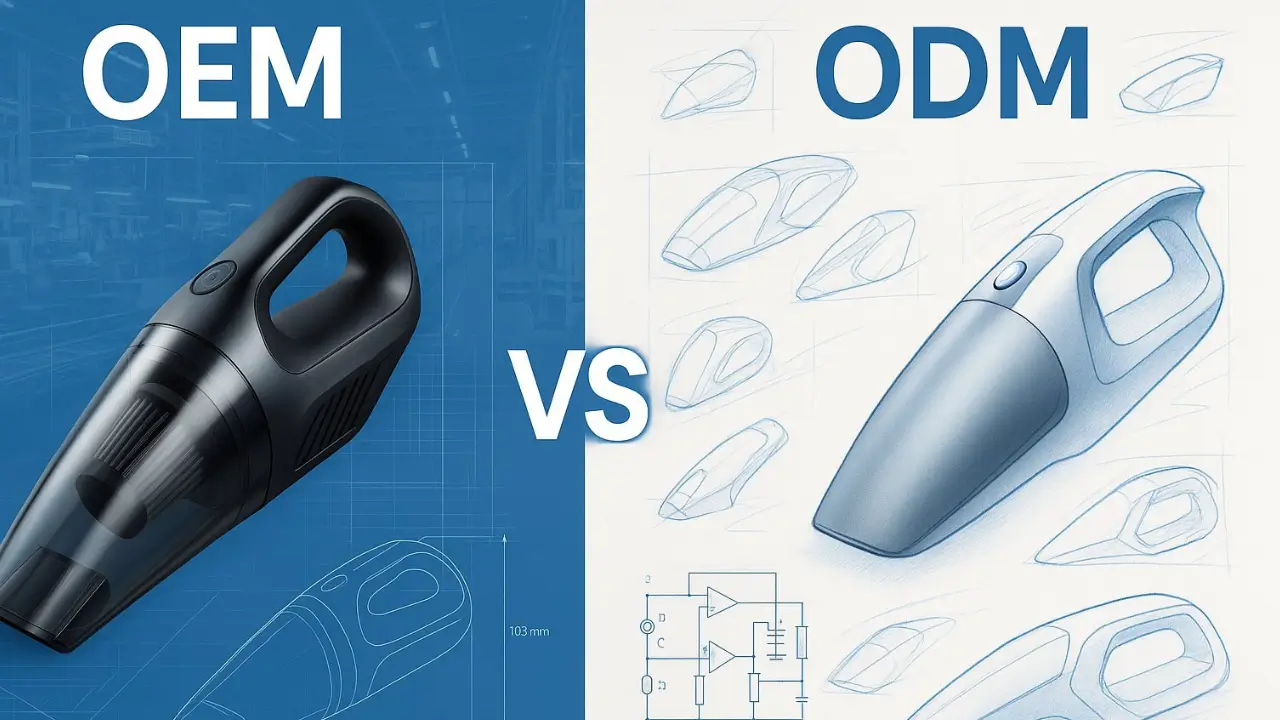Cordless car vacuums rely heavily on suction power to effectively clean vehicle interiors, but understanding the technical specifications can be confusing for consumers. Most cordless car vacuums operate between 4-12 kPa suction power, with higher ratings generally providing better debris pickup performance. However, kPa ratings alone don’t tell the complete story about cleaning effectiveness.
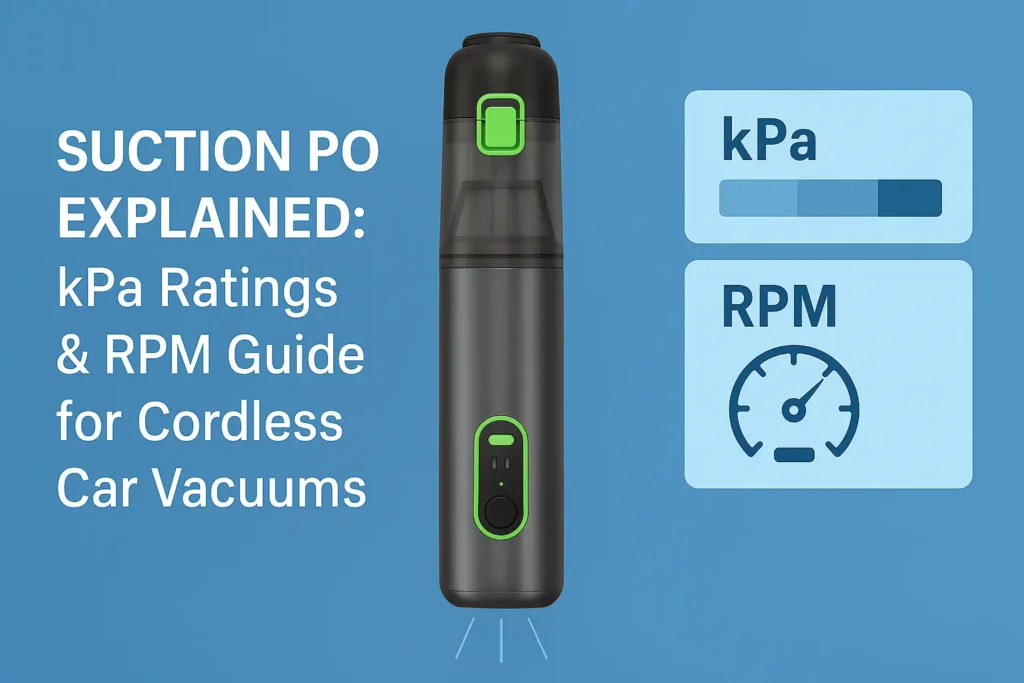
The relationship between kPa ratings, RPM specifications, and real-world performance involves multiple factors that affect how well these portable devices clean carpets, upholstery, and hard surfaces. Battery life, airflow design, and filtration systems all play crucial roles in determining actual cleaning capability beyond the raw suction numbers.
Understanding these technical specifications helps consumers make informed decisions when selecting a cordless car vacuum that matches their specific cleaning needs and usage patterns. The balance between suction power, battery runtime, and additional features determines whether a vacuum will effectively handle everything from fine dust to larger debris in vehicle environments.
Why Suction Power Matters In Cordless Car Vacuums
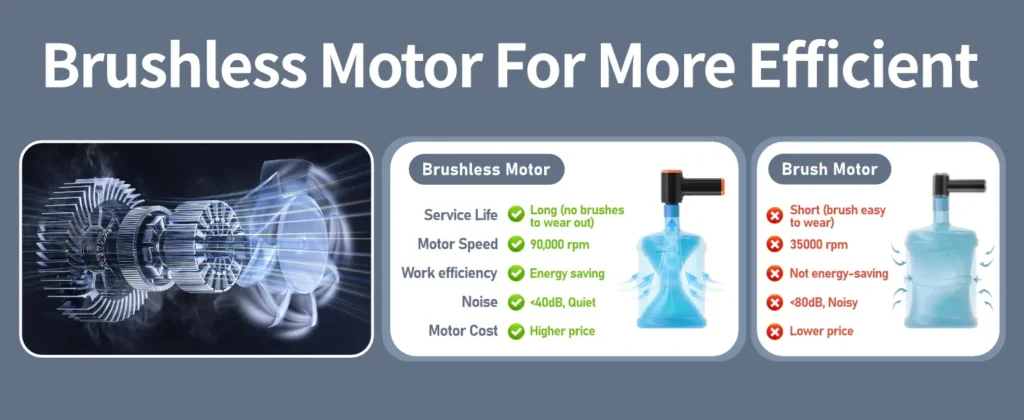
Suction power determines how effectively a cordless car vacuum removes debris from different surfaces and confined spaces. Higher kPa ratings enable better dirt extraction from fabric seats, carpet fibers, and narrow gaps between car components.
Why Suction Power Is A Key Factor For Cordless, Portable, Rechargeable Car Vacuum Cleaners
Battery limitations make suction power critical in cordless models. These vacuums must maximize cleaning efficiency within shorter operating windows compared to corded alternatives.
Most cordless car vacuums operate for 10-25 minutes per charge. Lower suction power means multiple passes over the same area, wasting precious battery life and extending cleaning time.
Motor efficiency directly impacts suction performance. Cordless units with inadequate suction struggle to lift embedded dirt from car upholstery and floor mats on the first attempt.
Weight considerations affect suction design. Manufacturers must balance motor power with portability, making effective suction even more valuable in lightweight models.
The confined workspace inside vehicles demands strong suction to extract debris from tight corners, seat crevices, and dashboard gaps where manual cleaning proves difficult.
How kPa Impacts Cleaning Seats, Carpets, And Tight Spaces
Fabric seats require 8-12 kPa minimum for effective debris removal. Lower pressure fails to extract pet hair, crumbs, and dust particles embedded in upholstery fibers.
Carpet cleaning demands higher suction levels. Car floor mats and carpeted areas need 12-16 kPa to lift dirt from deep within fiber layers.
| Surface Type | Minimum kPa | Cleaning Challenge |
|---|---|---|
| Leather seats | 6-8 kPa | Surface debris |
| Fabric upholstery | 8-12 kPa | Embedded particles |
| Floor carpets | 12-16 kPa | Deep fiber cleaning |
| Crevices | 10-14 kPa | Concentrated suction |
Tight spaces between seats and consoles require focused suction power. Narrow attachments concentrate airflow, but the base unit must generate sufficient kPa to maintain effectiveness through these accessories.
What Does kPa Mean In Cordless Car Vacuums?

kPa measures the vacuum’s suction pressure in kilopascals, indicating how much air pressure difference the motor creates. Higher kPa ratings typically translate to stronger suction performance for removing dirt and debris from vehicle interiors.
Define kPa In Simple Terms
kPa stands for kilopascals, a unit that measures pressure. In vacuum cleaners, kPa indicates the pressure difference between the inside of the vacuum and the outside air.
One kilopascal equals 1,000 pascals. Most cordless car vacuums operate between 5-20 kPa. The higher the number, the greater the pressure difference the vacuum creates.
Common kPa ranges for cordless car vacuums:
- Basic models: 5-8 kPa
- Mid-range models: 9-15 kPa
- High-performance models: 16-20+ kPa
This measurement tells users how much suction force the vacuum motor generates. It represents the vacuum’s ability to create negative pressure that pulls air and debris through the cleaning attachment.
The Link Between kPa And Suction Strength
Higher kPa ratings indicate stronger suction power. A vacuum with 15 kPa creates more suction force than one with 8 kPa.
This increased suction strength affects cleaning performance. Vacuums with higher kPa ratings pull dirt from deeper carpet fibers and crevices more effectively.
Performance differences by kPa level:
- 5-8 kPa: Light dust and surface debris
- 9-15 kPa: Pet hair, sand, and embedded dirt
- 16+ kPa: Heavy debris and deep carpet cleaning
The kPa rating works with airflow to determine overall cleaning effectiveness. A vacuum needs sufficient kPa to maintain strong suction even when debris partially blocks the airway.
Users should consider their specific cleaning needs when evaluating kPa ratings. Higher ratings provide better performance but may reduce battery life in cordless models.
Typical kPa Range For Cordless, Portable Car Vacuums
Most cordless car vacuums deliver between 4-16 kPa of suction power. Battery-powered models typically perform best in the 8-12 kPa range for automotive cleaning tasks.
Low, Medium, And High Suction Ranges
Low suction models operate between 4-7 kPa. These units handle light dust and debris from dashboard surfaces and cup holders.
They work well for quick cleanups but struggle with embedded dirt in fabric seats. Most budget models under $50 fall into this category.
Medium suction vacuums deliver 8-12 kPa of power. This range effectively removes sand, crumbs, and pet hair from car interiors.
They can pull dirt from floor mats and seat crevices. Mid-range models typically cost $50-120 and offer the best balance of power and battery life.
High suction units produce 13-16 kPa or more. These models tackle stubborn debris and deep carpet cleaning tasks.
They drain batteries faster but complete jobs quicker. Premium models above $120 often feature these higher power levels.
What’s Good For Rechargeable Models
Rechargeable car vacuums perform optimally between 8-12 kPa for most automotive tasks. This range provides adequate suction without excessive battery drain.
Models with 10-12 kPa handle 90% of car cleaning needs effectively. They remove dirt from fabric seats, floor mats, and tight spaces around consoles.
Higher kPa ratings above 14 reduce runtime significantly. A 16 kPa vacuum may run only 8-12 minutes compared to 20-25 minutes at 10 kPa.
Battery technology limits sustained high suction in portable units. Most cordless models cannot maintain peak kPa throughout the entire charge cycle.
How kPa Affects Real-World Cleaning Performance
Higher kPa ratings translate directly to stronger debris removal capabilities, with 8-12 kPa handling light dust while 15-20 kPa tackles embedded materials. Battery consumption increases significantly with higher suction power, creating a performance versus runtime trade-off.
Lifting Embedded Dirt And Pet Hair
Vacuums with 15-20 kPa suction power effectively remove pet hair from car upholstery and carpet fibers. This pressure range creates sufficient airflow velocity to dislodge hair that has worked deep into fabric weaves.
Models below 12 kPa struggle with embedded materials. They may pick up surface debris but leave behind dirt particles pressed into carpet backing or seat crevices.
Ground-in dirt requires 18+ kPa for complete removal. Sand, mud, and food particles that have been compressed into surfaces need this higher pressure differential to break the adhesive bond with fabric or carpet.
Pet hair removal effectiveness varies by suction strength:
- 8-10 kPa: Surface hair only
- 12-15 kPa: Loosely embedded hair
- 18+ kPa: Deeply embedded hair and stubborn debris
The brush attachment design amplifies kPa effectiveness. Motorized brush rolls paired with 15+ kPa suction remove significantly more embedded material than static brushes at the same pressure rating.
Trade-Off Between High Suction And Battery Life
Maximum kPa settings reduce runtime by 40-60% compared to standard modes. A vacuum rated at 20 kPa may operate for only 8-10 minutes on high power versus 20-25 minutes on medium settings.
Battery voltage directly impacts sustained suction power. Lower battery charge causes kPa output to drop progressively, with some models losing 30% suction strength when batteries reach 50% capacity.
Power management features help balance performance and runtime:
- Auto-adjust modes that reduce suction on hard surfaces
- Boost buttons for temporary high power
- LED indicators showing current suction level
Most cordless car vacuums offer 2-3 power settings. The highest setting delivers advertised kPa ratings but drains batteries rapidly, making it suitable only for tough cleaning spots rather than entire vehicle interiors.
Factors That Influence Suction In Portable Vacuums
Motor power, battery specifications, and airflow components directly determine a cordless vacuum’s cleaning performance. These three elements work together to create the suction force measured in kPa ratings.
Motor Wattage And Efficiency
Motor wattage determines the maximum power available for suction generation. Most cordless car vacuums feature motors ranging from 80 to 150 watts.
Higher wattage motors can spin faster and move more air through the system. A 120-watt motor typically produces 15-20% more suction than an 80-watt equivalent.
Motor efficiency affects how much electrical power converts to actual suction. Brushless motors achieve 85-90% efficiency compared to 70-75% for brushed motors.
Key Motor Specifications:
- Low Power: 80-100 watts (8-12 kPa)
- Medium Power: 100-120 watts (12-16 kPa)
- High Power: 120-150 watts (16-22 kPa)
Motor RPM directly correlates with suction strength. Most cordless vacuums operate between 20,000-35,000 RPM at maximum power.
Battery Voltage And Capacity
Battery voltage affects motor speed and suction consistency. Higher voltage systems maintain stronger suction as the battery drains.
Common Voltage Configurations:
| Voltage | Typical Performance | Runtime |
|---|---|---|
| 12V | 8-12 kPa | 15-20 min |
| 18V | 12-16 kPa | 20-25 min |
| 22V | 16-22 kPa | 25-30 min |
Battery capacity measured in amp-hours (Ah) determines runtime at peak performance. A 2.5Ah battery provides approximately 25% longer cleaning time than a 2.0Ah battery.
Lithium-ion batteries maintain voltage better than older technologies. They deliver consistent suction until nearly depleted rather than gradually weakening.
Nozzle Design And Filter Condition
Nozzle diameter affects suction concentration and airflow velocity. Narrow 25mm nozzles create intense suction for crevices while 40mm nozzles cover larger areas.
Clogged filters reduce airflow and can decrease suction by 30-50%. HEPA filters require cleaning every 3-4 uses to maintain optimal performance.
Filter Impact on Suction:
- Clean filter: 100% rated suction
- Moderately dirty: 70-80% suction
- Heavily clogged: 50-60% suction
Cyclonic separation systems maintain suction longer by preventing debris from reaching the main filter. They separate particles using centrifugal force before air reaches the motor.
Hose length and diameter create resistance that reduces suction at the nozzle. Each additional foot of hose can reduce effective suction by 5-8%.
kPa Vs. Air Watts (AW) And Other Specs
Car vacuum manufacturers use different measurement systems to describe suction performance, with kPa being just one metric among several. Understanding these differences helps buyers make informed decisions beyond marketing claims.
Difference Between kPa, AW, And CFM
kPa (kilopascals) measures static pressure or lifting power. It indicates how well a vacuum can lift debris vertically against gravity. Higher kPa values mean stronger suction force for stubborn particles.
Air Watts (AW) combines both suction power and airflow volume into a single measurement. This metric multiplies static pressure by airflow rate to show overall cleaning effectiveness. AW provides a more complete picture of vacuum performance.
CFM (Cubic Feet per Minute) measures airflow volume only. It shows how much air moves through the vacuum system per minute. High CFM helps move loose debris but doesn’t indicate lifting strength.
| Measurement | What It Shows | Best For |
|---|---|---|
| kPa | Static pressure/lifting power | Heavy debris, embedded dirt |
| Air Watts | Combined power and airflow | Overall performance comparison |
| CFM | Air volume movement | Light debris, dust circulation |
These three measurements work together. A vacuum needs adequate pressure (kPa) to lift debris and sufficient airflow (CFM) to transport it to the collection chamber.
Why kPa Is Often Used In Car Vacuum Marketing
Car vacuum manufacturers favor kPa ratings because they produce impressive numerical values. A 15 kPa rating sounds more powerful than 50 Air Watts, even when describing similar performance levels.
kPa measurements are easier to obtain during testing. Manufacturers can measure static pressure without complex airflow calculations required for Air Watts. This simplifies quality control and specification sheets.
Car cleaning involves lifting embedded debris from upholstery and carpets. High kPa ratings directly relate to this lifting capability, making the measurement relevant for automotive applications.
However, kPa alone doesn’t tell the complete story. A vacuum with excellent pressure but poor airflow will struggle to move debris once lifted. Smart buyers compare multiple specifications rather than focusing solely on kPa values.
Relationship Between Suction Power And RPM
RPM directly influences a vacuum’s motor speed and airflow generation, but the relationship with suction power involves multiple engineering factors. Motor efficiency, impeller design, and airflow restrictions all determine how effectively high RPM translates into actual cleaning performance.
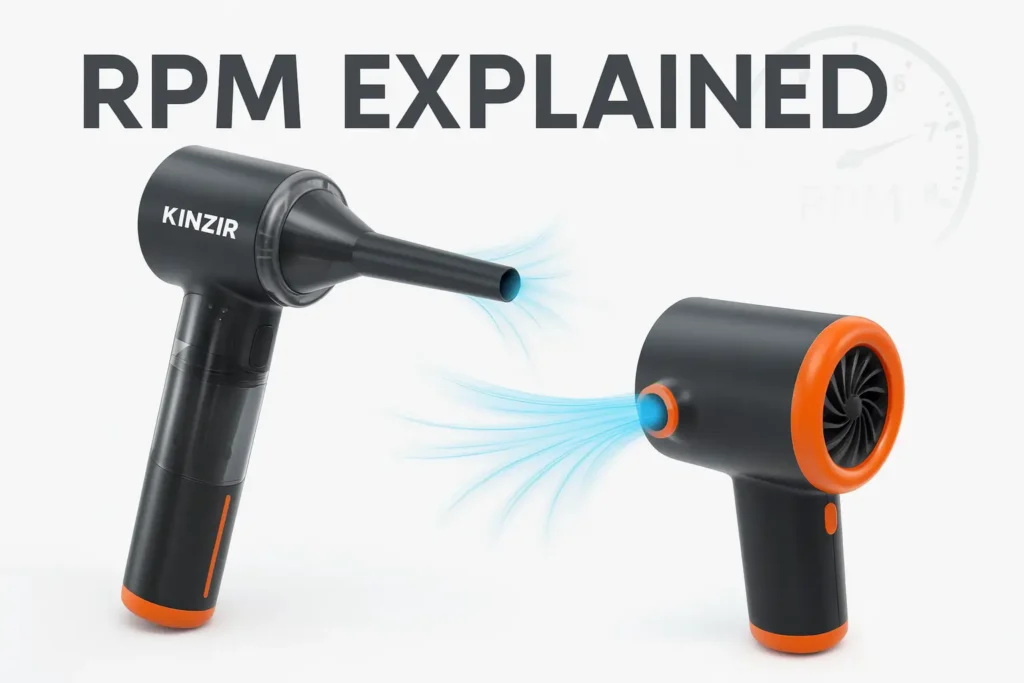
What RPM Means And How It’s Measured
RPM stands for revolutions per minute, measuring how many complete rotations a motor’s shaft makes in 60 seconds. Digital tachometers or optical sensors typically measure this value during vacuum testing.
Most cordless car vacuum motors operate as brushless DC motors. These motors spin an impeller that creates airflow by accelerating air through the vacuum system.
Manufacturers measure RPM at the motor shaft before any gear reduction or impeller attachment. The actual impeller speed may differ from the advertised motor RPM depending on the drive system design.
Common RPM measurement points:
- Motor shaft (raw motor speed)
- Impeller assembly (actual fan speed)
- Under load conditions (realistic operating speed)
How Higher RPM Can Contribute To Higher Suction Power
Higher RPM increases the impeller’s rotational speed, which accelerates air particles more rapidly through the vacuum chamber. This faster air movement typically generates greater airflow volume and can improve suction performance.
The relationship follows basic fluid dynamics principles. As impeller speed doubles, the theoretical airflow can increase significantly, though real-world gains are smaller due to system losses.
Centrifugal force increases exponentially with RPM. An impeller spinning at 20,000 RPM generates four times more centrifugal force than the same impeller at 10,000 RPM.
RPM impact on airflow:
- 15,000 RPM: 25-35 CFM typical
- 20,000 RPM: 35-45 CFM typical
- 25,000 RPM: 45-55 CFM typical
Higher speeds also reduce the motor’s sensitivity to backpressure from clogged filters or debris blockages.
Why More RPM Doesn’t Always Mean Better Suction
Excessive RPM can create turbulent airflow that reduces suction efficiency. Turbulence wastes energy as heat and noise rather than productive airflow movement.
Impeller design limits how effectively high speeds convert to suction power. Poorly designed impellers create more noise than airflow at extreme speeds.
Battery drain increases exponentially with RPM. A motor running at maximum RPM may consume 300% more power than at optimal speeds, severely reducing runtime.
Limiting factors for high RPM:
- Aerodynamic losses: Turbulence reduces efficiency
- Bearing limitations: High speeds increase wear
- Power consumption: Exponential battery drain
- Noise levels: Often exceed acceptable limits
Manufacturing tolerances become critical at high speeds. Small imbalances cause vibration and premature component failure.
Typical RPM Ranges For Portable, Rechargeable Car Vacuums
Entry-level cordless car vacuums typically operate between 12,000-18,000 RPM. These models prioritize battery life and quiet operation over maximum suction power.
Mid-range models run at 18,000-25,000 RPM. This range offers good balance between cleaning performance and reasonable runtime on standard lithium-ion batteries.
Premium cordless car vacuums reach 25,000-35,000 RPM. These high-speed motors require advanced battery technology and sophisticated motor control systems.
| Vacuum Category | RPM Range | Typical Use Case |
|---|---|---|
| Budget Models | 12,000-18,000 | Light debris, extended runtime |
| Mid-Range | 18,000-25,000 | General cleaning, balanced performance |
| Premium | 25,000-35,000 | Heavy debris, maximum power |
Professional-grade models may exceed 35,000 RPM but require larger batteries and active cooling systems.
Importance Of Balancing RPM, kPa, And Motor Efficiency
Optimal vacuum performance requires balancing RPM with pressure generation and power consumption. High RPM without adequate pressure creates airflow that cannot lift debris effectively.
Motor efficiency determines how much electrical power converts to useful suction work. Efficient motors can deliver strong suction at moderate RPM, extending battery life significantly.
Key balance factors:
- RPM vs. Pressure: Higher speeds don’t guarantee higher kPa ratings
- Power vs. Runtime: Maximum RPM drastically reduces operating time
- Noise vs. Performance: Excessive speeds create unusable noise levels
The most effective cordless car vacuums operate at RPM levels that maximize the product of airflow and pressure while maintaining reasonable power consumption. This typically occurs at 70-85% of maximum motor speed.
Balancing Suction Power With Battery Life
Higher kPa ratings directly reduce battery runtime, while multiple power modes allow users to optimize performance for different cleaning tasks. Modern cordless car vacuums typically offer 2-4 suction settings to manage this trade-off effectively.
Effect Of High kPa On Run Time
Maximum suction power creates the shortest battery life in cordless car vacuums. A vacuum operating at 12-15 kPa typically runs for 8-12 minutes on high power mode.
The same device drops to 5-8 minutes when pushed to its peak 18-20 kPa rating. This dramatic reduction occurs because the motor draws significantly more current to maintain higher suction levels.
Battery drain increases exponentially with kPa ratings:
| kPa Range | Typical Runtime | Power Draw |
|---|---|---|
| 8-10 kPa | 20-25 minutes | Low |
| 12-15 kPa | 10-15 minutes | Medium |
| 18-20 kPa | 5-8 minutes | High |
Users face a constant choice between cleaning power and working time. Heavy debris removal requires maximum kPa but limits cleaning sessions to under 10 minutes for most models.
Role Of Multiple Suction Modes
Most cordless car vacuums include 2-4 power settings to extend usability. Low mode typically operates at 40-50% of maximum kPa while extending runtime by 200-300%.
Standard mode configurations:
- Eco/Low: 6-8 kPa, 25-30 minutes
- Standard: 10-12 kPa, 15-20 minutes
- Max/Turbo: 16-20 kPa, 6-10 minutes
Smart users start cleaning sessions on low power for dust and light debris. They switch to maximum power only when encountering stubborn dirt or pet hair that requires full suction capability.
This approach maximizes total cleaning time while ensuring adequate power remains available for challenging spots.
Recommended kPa Ratings For Different Users
Different cleaning needs require specific suction power levels to achieve optimal results. Most cordless car vacuums range from 6 kPa to 20 kPa, with each tier serving distinct user requirements.
Casual Cleaning, Pet Owners, And Heavy-Duty Users
Casual users who perform light weekly cleaning need 6-10 kPa of suction power. This level handles dust, crumbs, and surface debris effectively without draining battery life quickly.
Pet owners require 12-16 kPa to remove embedded pet hair from upholstery and carpets. The higher suction power pulls hair from fabric fibers that lower-powered units cannot reach.
Heavy-duty users dealing with construction debris, sand, or frequent deep cleaning need 16-20 kPa. These units tackle stubborn dirt and larger particles but consume more battery power per use.
| User Type | kPa Range | Typical Debris |
|---|---|---|
| Casual | 6-10 kPa | Dust, crumbs |
| Pet Owners | 12-16 kPa | Pet hair, dander |
| Heavy-Duty | 16-20 kPa | Sand, large debris |
Battery runtime decreases as kPa ratings increase. Users should balance cleaning needs with desired operating time.
Other Features That Enhance Cleaning Efficiency
Modern cordless car vacuums integrate multiple features beyond suction power that directly impact cleaning performance. Specialized attachments, integrated lighting, ergonomic design, and maintenance-friendly filters work together to maximize debris removal effectiveness.
Attachments
Crevice tools reach narrow spaces between seats and console areas where standard nozzles cannot fit. These attachments typically measure 6-8 inches long with tapered ends that access gaps as narrow as 0.5 inches.
Brush attachments feature stiff bristles that agitate embedded dirt in fabric upholstery and carpet fibers. The bristles loosen debris that suction alone cannot remove effectively.
Upholstery tools use wider, flatter designs with fabric-safe edges that clean seat surfaces without scratching leather or vinyl. These tools often include rubberized lips that create better seals on smooth surfaces.
Common Attachment Types:
- Crevice tool (6-8 inches)
- Brush attachment (rotating or static bristles)
- Upholstery tool (flat, wide opening)
- Extension wand (adds 12-18 inches reach)
LED Lights
Integrated LED lights illuminate dark areas under seats, floor mats, and trunk spaces where debris hides. Most car vacuums include 1-3 LED bulbs positioned near the nozzle opening.
The lights activate automatically when the vacuum turns on. This eliminates the need for separate flashlights or phone lights during cleaning.
LED positioning affects visibility effectiveness. Front-mounted LEDs on the nozzle provide direct lighting where suction occurs, while side-mounted lights can create shadows that reduce cleaning accuracy.
Lightweight Design
Vacuums weighing 2-4 pounds reduce arm fatigue during extended cleaning sessions. Heavier models above 5 pounds become difficult to maneuver in tight car spaces.
Weight distribution impacts handling comfort. Models with batteries positioned near the handle maintain better balance than those with rear-heavy designs.
Compact dimensions allow easier storage in trunks or glove compartments. Most portable car vacuums measure 12-16 inches in length when fully assembled.
The grip design affects control during use. Ergonomic handles with rubberized surfaces prevent slipping and provide better leverage when cleaning overhead areas like headliners.
Washable Filters
Washable HEPA filters maintain suction performance while reducing replacement costs. These filters capture particles as small as 0.3 microns, including fine dust and allergens.
Filter maintenance requires rinsing with water every 3-4 uses. Complete drying takes 24 hours before reinstallation. Some models include backup filters for continuous use during drying periods.
Filter Maintenance Schedule:
- Light use: Wash monthly
- Regular use: Wash bi-weekly
- Heavy use: Wash weekly
Clogged filters reduce airflow by up to 50%, significantly decreasing suction effectiveness. Visual inspection shows when filters need cleaning through accumulated debris and discoloration.
Conclusion: How To Choose The Right kPa Car Vacuum
Selecting the ideal kPa rating requires balancing suction strength with practical features. Users need adequate power for their cleaning tasks while maintaining portability and runtime efficiency.
kPa Matters But Should Be Considered With Portability, Battery Life, And Attachments
Light cleaning tasks require 8-12 kPa for dust and crumbs on seats and dashboards. These lower-powered models typically weigh 2-3 pounds and run for 20-30 minutes.
Heavy-duty cleaning demands 15-20 kPa for pet hair, sand, and debris in carpets. Higher kPa units usually weigh 4-6 pounds with 10-15 minute battery life.
Battery capacity directly affects runtime. Models with 2000-3000mAh batteries provide longer cleaning sessions but add weight.
Essential attachments include crevice tools for tight spaces and brush heads for upholstery. Wide nozzles work best for large surface areas.
Users should prioritize kPa ratings that match their typical mess types. A 10 kPa vacuum handles most car interiors effectively while maintaining good portability and battery life balance.
Frequently Asked Questions
Suction power measurement involves specific technical relationships between kPa ratings and motor RPM. These factors directly impact cleaning performance and efficiency in different car cleaning scenarios.
How does suction power correlate with kPa in cordless car vacuums?
kPa measures the pressure difference created by the vacuum motor. Higher kPa ratings indicate stronger suction force at the vacuum’s opening.
The relationship is direct but not linear. A vacuum with 8 kPa provides significantly more suction than one with 4 kPa.
Most cordless car vacuums range from 3-12 kPa. Units above 8 kPa effectively remove embedded dirt from car upholstery and carpets.
What role does RPM play in the performance of cordless car vacuums?
RPM indicates how fast the motor spins per minute. Higher RPM creates more airflow through the vacuum system.
Motor speeds typically range from 15,000 to 35,000 RPM in cordless car vacuums. Faster rotation generates increased suction pressure.
RPM affects both suction strength and airflow volume. These combine to determine overall cleaning effectiveness.
Can the suction performance of a car vacuum be determined by its kPa rating alone?
kPa rating provides only part of the performance picture. Airflow volume measured in CFM also impacts cleaning ability.
A vacuum with high kPa but low airflow struggles with larger debris. Conversely, high airflow with low kPa cannot remove embedded particles.
Effective performance requires balanced kPa and airflow specifications. Both measurements together indicate true suction capability.
In practical terms, what difference does a higher RPM make in car vacuum cleaners?
Higher RPM motors generate stronger suction for deep cleaning. They remove pet hair and ground-in dirt more effectively.
Motors above 25,000 RPM typically provide better performance on car carpets. Lower RPM units work adequately for surface debris only.
Increased RPM also affects battery drain rates. Higher speed motors consume more power and reduce operating time.
How can I compare the cleaning efficiency of car vacuums with different kPa ratings?
Compare kPa ratings within similar price ranges and motor types. Higher numbers indicate stronger suction capability.
Consider the 2-3 kPa difference threshold for noticeable performance improvement. Smaller differences may not justify cost increases.
Test performance on similar debris types when possible. Real-world cleaning tests provide better comparisons than specifications alone.
Is there a standard range for kPa ratings when considering a powerful cordless car vacuum?
Powerful cordless car vacuums typically measure 6-12 kPa. Units below 6 kPa struggle with automotive cleaning tasks.
Professional-grade models often exceed 10 kPa ratings. These handle heavy-duty cleaning and commercial applications.
Consumer models between 7-9 kPa provide adequate power for regular car maintenance. This range balances performance with battery life.

